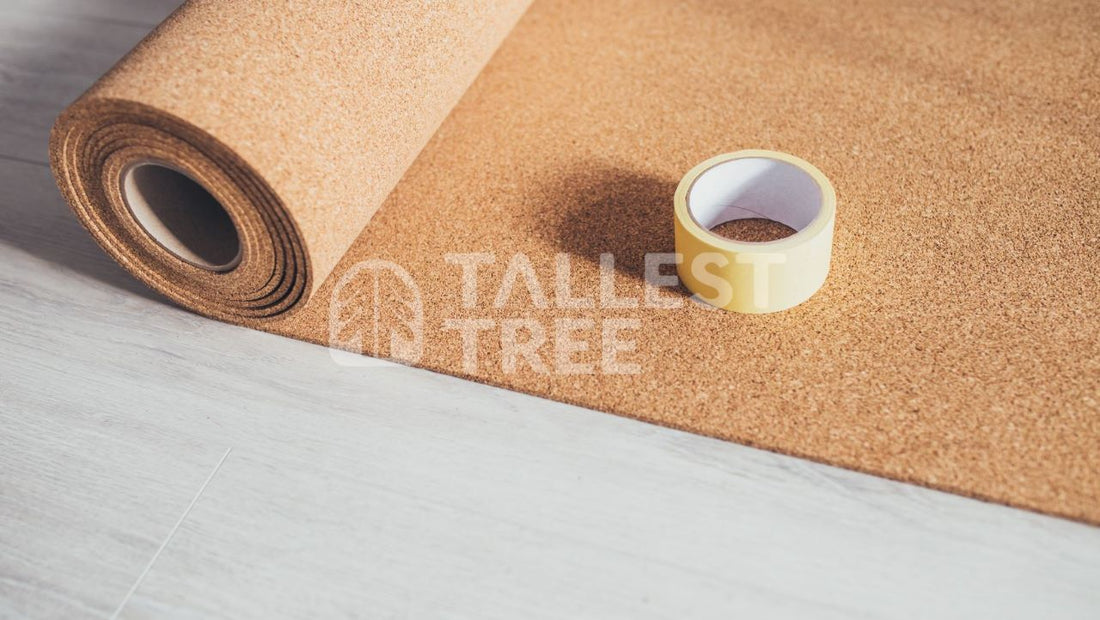Hardwood floors are classic, elegant, and timeless. But did you know that the care and maintenance of your hardwood flooring involves more than just regular sweeping and mopping? To ensure maximum longevity for your hardwood floors, you need to consider the impact of something often overlooked: underlayment. While many homeowners don’t pay much attention to what lies beneath their hardwood floors, understanding different types of underlayment can make all the difference when it comes to protecting your valuable investment. In this blog post, we'll discuss how installing an appropriate underlayment creates numerous benefits for you and your home.
What is Hardwood Floor Underlayment?
Hardwood floor underlayment refers to the material that is laid beneath the finished hardwood flooring. This material serves to provide a barrier between the wood and the subfloor. It is designed to act as a cushion, absorb sound, and provide insulation. Different types of flooring underlayment are available depending on the type of subfloor and the type of hardwood flooring being installed. The underlayment is an essential component of the installation process, as it helps to extend the life of the hardwood flooring and improve the overall appearance of the finished product. Professional installation is recommended for all hardwood flooring and the accompanying underlayment.
Benefits of Using Hardwood Floor Underlayment
-
Sound Absorption: Installing underlayment significantly reduces both impact noise (such as footsteps) and airborne noise (like talking or music) between floors of your home. This means that an underlayment can help create a quieter living environment, particularly in multi-story homes or buildings where noise disturbance may be a concern.
-
Moisture Protection: Hardwood floors are susceptible to damage from moisture which can lead to warping, cupping, or buckling. An underlayment acts as a moisture barrier, preventing moisture from seeping in through the subfloor and causing damage to your hardwood floors.
-
Comfort: Underlayments provide a subtle cushion to your hardwood floors, enhancing their comfort underfoot and potentially reducing fatigue during prolonged periods of standing or walking on the floor.
-
Thermal Insulation: Certain types of underlayment offer improved thermal insulation and help to maintain a consistent temperature in your home and reduce energy costs.
- Prolonged Floor Lifespan: The right underlayment helps distribute weight evenly across your hardwood floor, reducing localized stress and prolonging the lifespan of your flooring investment.
Types of Hardwood Floor Underlayment
-
Foam Underlayment: Foam underlayment is a fantastic option for homeowners who are looking to update their floors on a budget. Made of polyethylene, this lightweight and flexible material provides cushioning and support for your flooring. What's more, foam underlayment is one of the most affordable types of underlayment available, making it an excellent choice for those who are cost-conscious. Not only is it easy to install, but it is also incredibly versatile—able to be cut to fit the shape and size of any room. When considering a flooring project, foam underlayment is certainly an option worth exploring.
-
Felt Underlayment: When installing hardwood flooring, one important component to consider is the underlayment. Felt underlayment is a popular choice for many flooring installations due to its impressive sound absorption and insulation capabilities. This type of underlayment is typically composed of recycled materials and natural or synthetic fibers, such as wool or polyester, which are compressed to create a dense, felt-like material. Unlike other underlayment options, felt underlayment has an exceptional ability to absorb sound and regulate temperature providing a more comfortable and quiet environment.
-
Rubber Underlayment: Rubber is an excellent underlayment material for those seeking a premium flooring experience. Designed with sound absorption, comfort, and durability in mind, it ensures an enjoyable and long-lasting hardwood flooring experience. What's more, rubber underlayment is water-resistant which makes it an excellent choice for moist environments. Although it comes at a higher price point compared to other types of underlayment, the benefits it offers guarantee a comfortable and sound-proof flooring experience for years to come.
-
Cork Underlayment: Cork is sustainably obtained from the bark of cork oak trees during a process that does not harm the tree. It is an environmentally friendly material that offers a variety of benefits. In particular, cork underlayment is an excellent option for sound absorption due to its natural insulating properties that can help minimize noise transmission between floors. But that's not all - cork underlayment also boasts mold, mildew, and insect-resistant qualities that make it a desirable choice for homeowners. Additionally, it can be a great choice for those with allergies or respiratory issues as it does not release any harmful VOCs that can be damaging to one's health.
Hardwood floor underlayments can make a huge difference in the lifespan of your floor. Not only do they increase stability and protect your floor from moisture, but they also add insulation and soundproofing. No matter what type of underlayment you choose, with proper installation and maintenance, you can rest assured knowing that your hardwood floors will remain in great condition for years to come. And now that you are better informed, remember to take into consideration all the factors – thickness, material type, cost – before choosing which option is best for you. Research is key when it comes to protecting one of the most important investments in your home!

